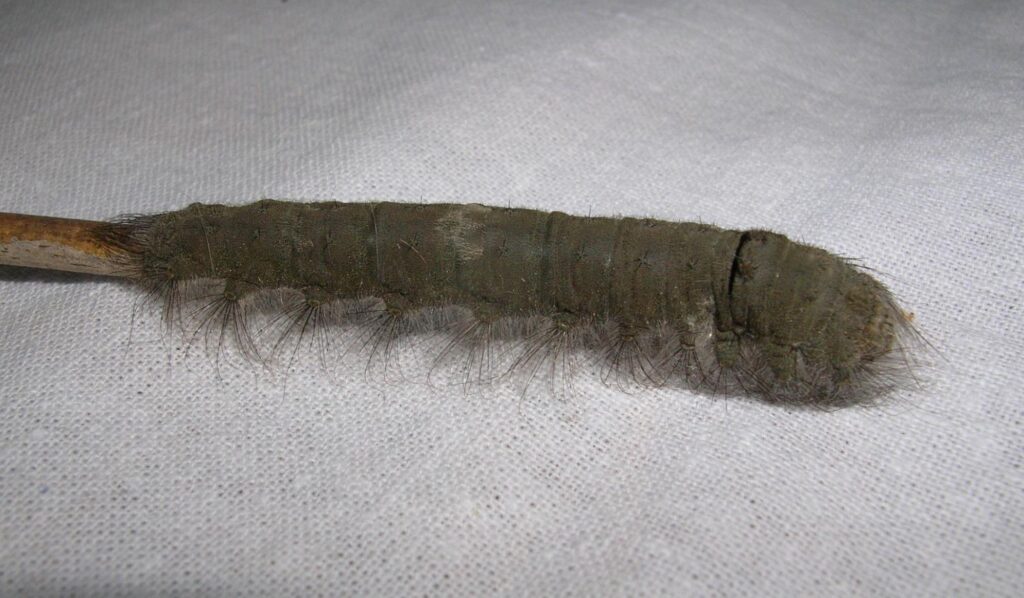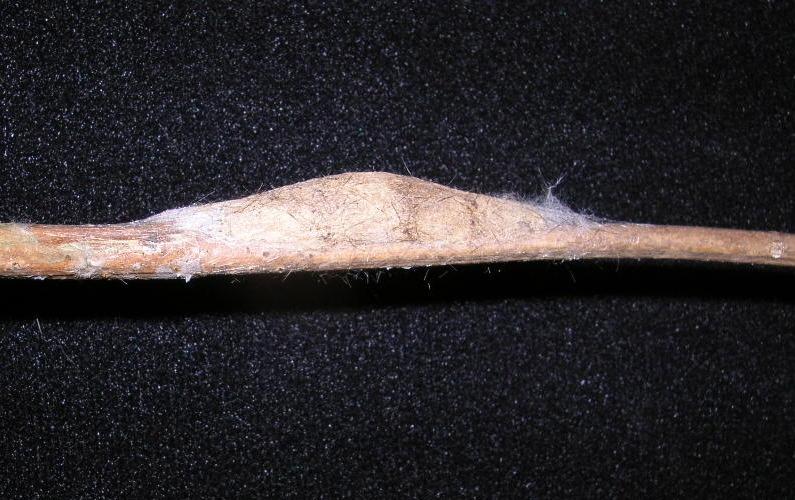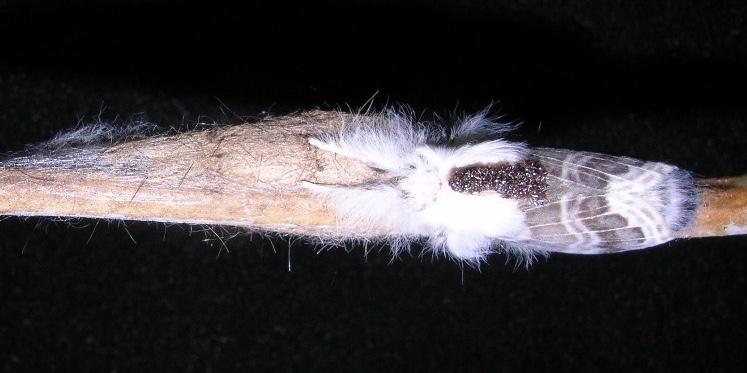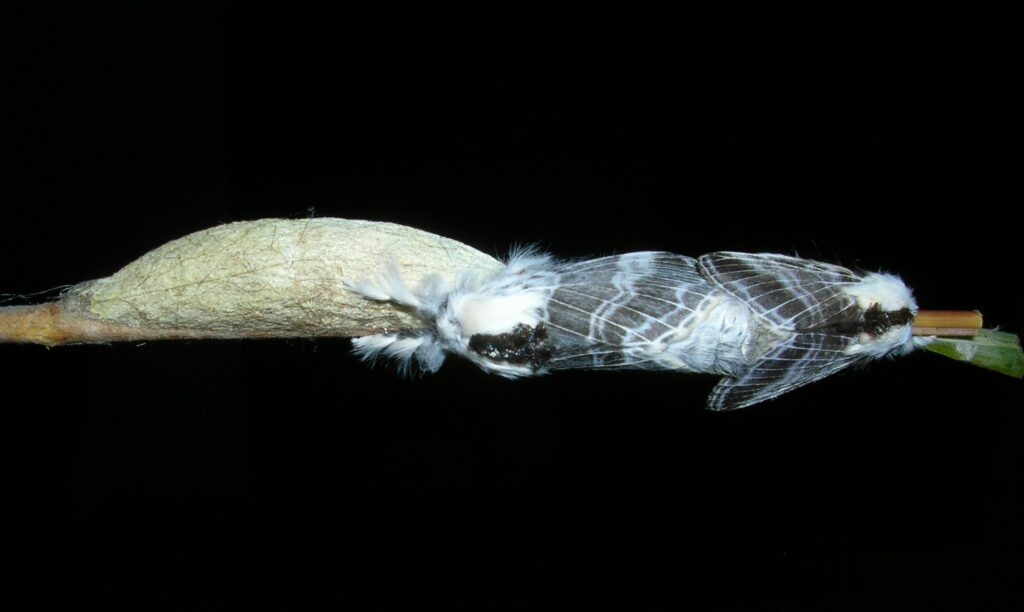by Ilse Gebhard, KAWO member
One of the fascinating aspects of raising caterpillars is to observe their “lifestyle.” For example, the monarch caterpillar lives in the fast lane. It eats ravenously day and night for about two weeks, completing its caterpillar stage in that time and its overall metamorphosis from the day the egg is laid to the date the butterfly emerges in about one month. This fast development allows it to have several generations each summer, depending on the weather. Warmer weather means shorter development time. Since the monarch female can lay 500-700 eggs, an extra generation means a much larger population to migrate to Mexico in the fall.
On the other end of the developmental spectrum that I have come across is the large tolype (Tolype velleda) moth I called “Slowpoke.” It has just one generation a year and the caterpillar in question was already 1.5 inches long when I found it on July 3. “Slowpoke” grew only another half inch in the next 6 weeks when it made its cocoon on August 13. The cocoon stage then took another 6 weeks before the moth emerged on September 22.
I found “Slowpoke” on a leaf of a crabapple tree by our front door. It was almost dark and I was watering a pot of impatiens hanging in the tree. I would never have found it during the day when this species rests on bark and its coloration and texture make it blend in extremely well. Inside its jar home, it would rest during the day hugging the twig I provided. Even though I knew where it had to be, I always had to look close to see it. The cocoon was equally well camouflaged, looking even more like part of the twig.


“Slowpoke” never ate during the day, but most nights it would consume at least part of a crabapple leaf. Although I don’t have numbers to back up my impression, I suspect that, overall, the weight of leaves consumed is not that different between the monarch and the large tolype – just their rates of consumption and growth differ.
Not only are the caterpillar and the cocoon well camouflaged on bark, but so are the eggs and the moths. The eggs, which overwinter, are laid down in a chainlike series along a branch or trunk and are covered with black scales from the female’s abdomen. While humans are highly unlikely to find these eggs, the brown creeper going up a tree trunk and the white- and red-breasted nuthatches going down are sure to find some of them. And so will the chickadees, titmice, and woodpeckers as they forage along branches for food in winter. These and other birds will also find the caterpillars and cocoons in summer and the moths in fall. And that is a good thing, and one of nature’s checks and balances. We only know too well the devastation the spongy moth can cause as it defoliates trees over large areas unchecked by its natural enemies.
The moth emerged from its cocoon in the late afternoon. When darkness fell, I attached the stick with the cocoon and the moth to our clothes line on the deck. Female moths release a pheromone, which diffuses into the air to create a scent trail that male moths can pick up. The males have specialized antennae with sensory receptors that are very sensitive to the pheromone the females release, and they can detect it from significant distances.
If my moth was a male, it would just fly off. If it was a female, it might attract a male and mate. I prepared myself mentally to stay up late and check up on the moth every fifteen minutes. It was still there after fifteen and then thirty minutes. I took that as a sign that it was a female. But was there a male nearby and were the wind conditions right to diffuse the scent in its direction? An hour later I had my answer. A male had processed the pheromone signals and located her. I wished them happy mating and went to bed. By morning they were both gone.


